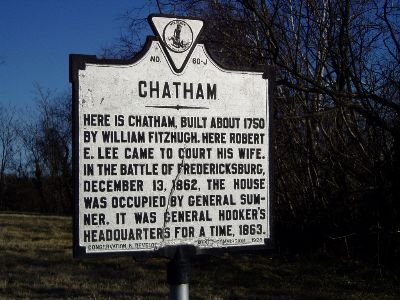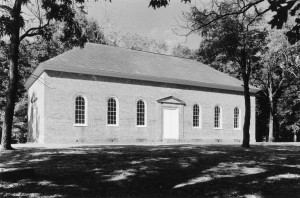Please enable Javascript and Flash to view this Flash video.
Ben Brishcar
Digital Whitman
Scanlon/Earnheart/Groom
10/9/09
A Kosmos of Voices
When I was given the option of a nonstandard project for the final for this class, my brain started boggling with options. Immediately the traditional seminar paper was out the window and my head started going towards the many other options. Now like many papers and possibly more projects, this one went through many different variations before incarnation in the attached link.
It started with the far to quixotic undertaking of doing a video in which different people would read one to two words of a section of “Song of Myself” and then splice all the video together into one epic montage. This was, needless to say, to big of a task and never got off the ground. The roots where there though for this project. The next version came with my looking over of my blog posts for most of the semester and realizing that so much of my focus has been on Whitman’s narrative voice that to do a project and leave this issue of voice out of it, would be doing myself a disservice.
The question arising out of this then, was where to go with Whitman’s voice. The answer then, came from some of my studies in performance. Things always sound different when they are read out loud. Also, with this being a project that focused highly on the idea of ‘voice’ it seemed to call for some sort of audio enhancement. Now, I had a vague idea of what I wanted to do with the audio, but to many ideas of what to do with the video. For a while I was throwing around the idea of taping the readers and trying to get their videos to sink up, in much the same way as my first conception of the project. The fear I had with this, though, was that there would be to much chaos from back and forth cuts, that I would lose the meaning of the voice in all the images. From there it went to the idea of some sort of slide show, either of pictures of Whitman or of the text of the poem. Where both of these ideas got dropped was that I really wanted this to be an audio experience and did not want people distracted by the images.
I finally settled on one iconic image of Whitman to run throughout the entire piece. The reason I left any visual at all was because I wanted this piece to go up through YouTube and have it accessible to more than just our blog. My feeling on the spirit of this class and the entire idea of a nontraditional project is that it should transcend the boundaries of the semester and stay up as a resource for others to use. In other words, I was not just building something for a grade, I was building something people will hopefully want to use in the future.
As far as the video itself functions, it was designed as an experimental look at voice. The idea was to combine a group of readers, each one embodying a different narrative voice found within Whitman’s poetry. These seven different voices were then going to bounce off each other to highlight similarities and differences within one section of poem. The readings were kept to two specific sequential sections of “Song of Myself”, namely sections 44 and 45; by using two sections instead of picking and choosing between multiple sections of Whitman, two things where accomplished. First, it eliminates much of the debate along the lines of ‘of course I found all these voices, I went out and dug through his full body of work,’ and second and more important of the two, it kept all of these separate voices still within one section of Whitman. I was already splitting up his voice, but by giving all the readings within one section, I was keeping it all congealed into one Whitman.
As far as cast list goes for this project, the seven voices I presented were: the Prophetic Whitman, voiced by Professor Gray Richards; Whitman the Good Grey Poet, voiced by Professor Claudia Emerson; the Womanly Whitman, voiced by Professor Mara Scanlon; the Natural Whitman, voiced by Dean Cedric Rucker; Whitman as Witness, voiced by Professor Ana Chichester; the Nurse Whitman, voiced by Taylor Williams, and the Sexual Whitman, voiced by Katie O’Connor.
To help better put this project into focus, here is how I defined each voice when looking through the poem. The Prophetic Whitman was the voice that was talking whenever Whitman is casting things beyond himself and reaching for things far beyond the grasp of what normal people could know, this is as close to a metaphysical Whitman as is seen in these sections of “Song of Myself”. Whitman, the Good Grey Poet, is the type of voice one would expect Whitman to pick up while sitting in a rocking chair and talking to someone; this is the more introspective Whitman, where as the prophet reaches out, the Good Grey Poet reaches in. The Nurse Whitman is the Whitman that reaches out to his readers or his audience. The title comes from the image of Whitman sitting next to the men he was nursing during and after the Civil War, hearing their stories and talking directly to them. The Womanly Whitman is the Whitman in touch with the more motherly feminine side of himself. The Natural Whitman is the Whitman of the dirt and the soil, the one who goes back to the earth for his imagery. Walt Whitman as Witness is the Whitman that steps back a bit and looks at what is going on; this voice does not have the all encompassing aspects of the Prophet Whitman, as it is not a voice of announcement, but rather a voice of being separate and reflective. The Sexual Whitman really needs no explaining, in that if one is to deny the inherent thrusting force of intimacy in Whitman’s poetry, then one is doing a terrible misreading.
As far as what I’ve discovered from this project is honestly difficult to say. This experiment was not a failure, as I feel that I have learned much about Whitman’s voice, and I feel that those that watch my video can take away much about Whitman’s voice. However, upon repeated listening to the audio file, I find that by pulling his voice apart, although I can hear more of the distinct voices differently, I also hear the singular multifaceted voice of Whitman that much more. It seems counter intuitive but the farther apart the pieces where, the more it sounded like one voice. One of the first questions I asked myself when I approached what was to become the final version of the project, was would looking at the voices in the piece separately lead to a better understanding of the contradictions and comparisons within the one overarching voice, or would it just be a matter of staring at the Kosmos, so to speak. I think in this case, what I’ve found is that Whitman’s voice exists because of the contradictions there in and the separate pieces contribute to one larger organism that would not exist without them.
Works Cited
Black, Stephen A. “Radical Utterances from the Soul’s Abysms: Toward a new Sense of Whitman.” PMLQ 88.1 (1973): 100-11. JSTOR. Web. 5 Dec. 2009.
Hutchinson, George B. “Whitman’s Confidence Game: The “Good Gray Poet” and the Civil War.” South Central Review 7 (1990): 20-35. JSTOR. Web. 5 Dec. 2009.
Jay, Gregory. “Catching up with Whitman: A Review Essay.” South Atlantic Review 57.1 (1992): 89-102. JSTOR. Web. 5 Dec. 2009.
Killingsworth, Myrth J. “Whitman and Motherhood: A Historical View.” American Literature 54.1 (1982): 28-43. JSTOR. Web. 5 Dec. 2009.
Stovall, Floyd. “Main Drifts in Whitman’s Poetry.” American Literature 4.1 (1932): 3-21. JSTOR. Web. 5 Dec. 2009

